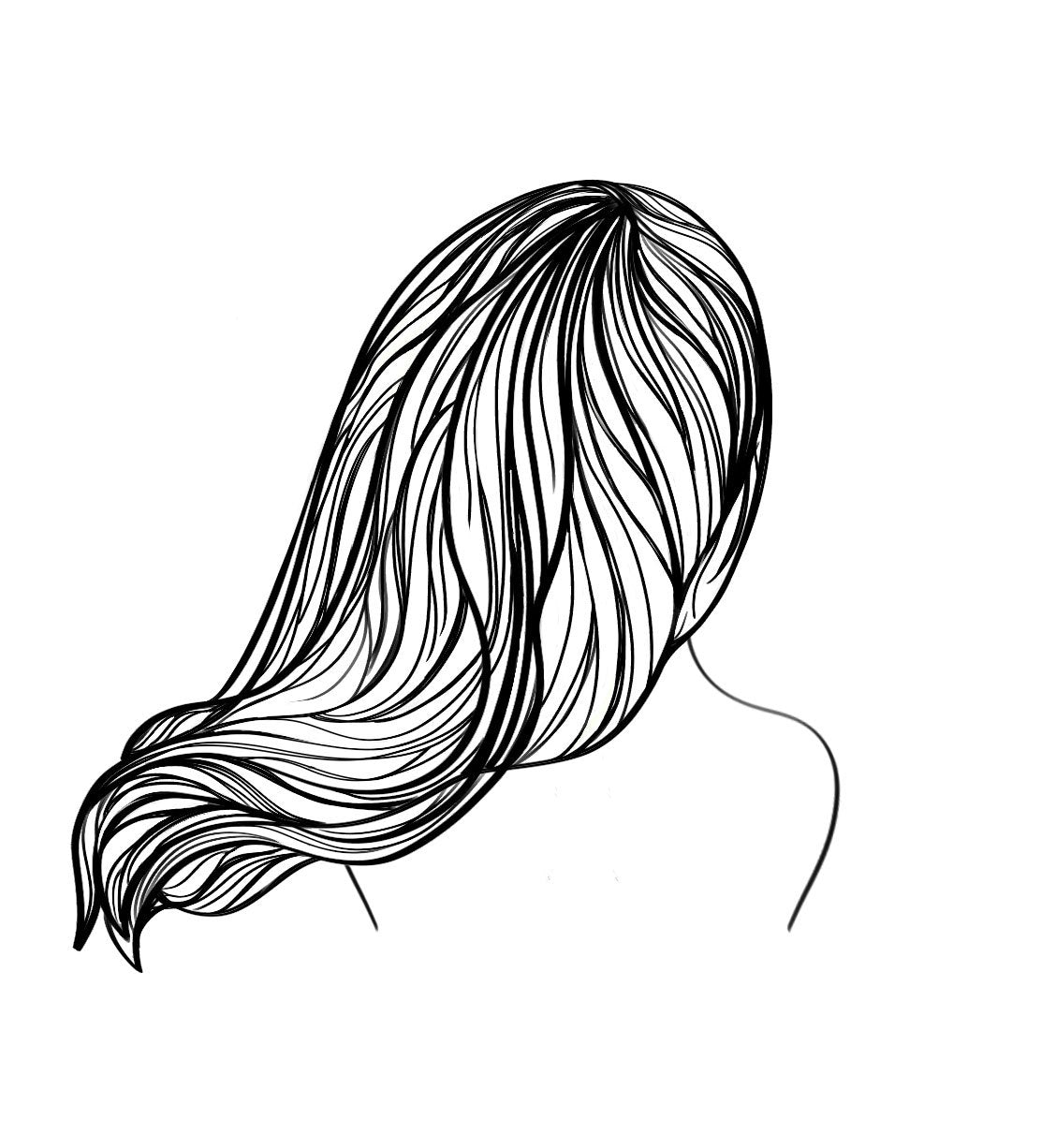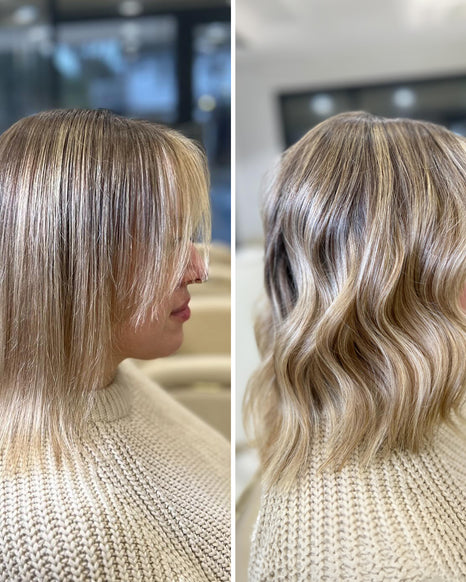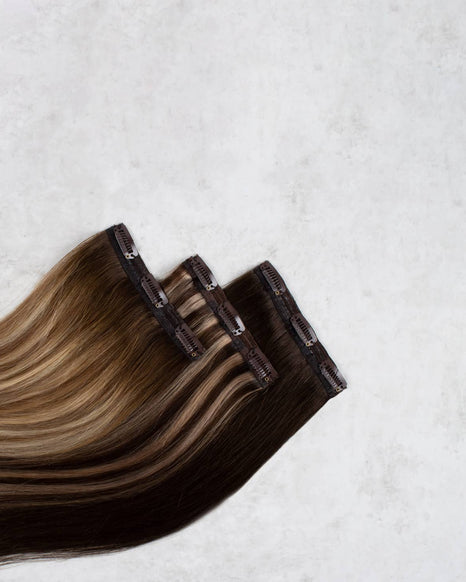
Hair Extension Methods: Pros & Cons
If you’ve been dreaming of waking up to long, full and flowing hair, then it’s time to consider hair extensions. With lots of different hair extension methods available to you at Additional Lengths, you may be unsure of where to start. To help you make the best choice for your hair, check out our guide answering some FAQ's and discussing the the pros and cons of different hair extension methods...
What Is The Safest Hair Extension Method?
All hair extension methods are safe when carried out by professionals, but if you’re nervous about trying them, why not wear some temporary hair extensions first as a starting point? Temporary clip-in hair extensions are wefts attached to clips that provide an easy and instant transformation. A perfect choice for thickening out your hair for a night out or a special occasion, they’re also a great option if you want to try out a new hairstyle without even having a haircut! Clip-in hair extensions are easy to use, don’t require professional application and if worn frequently and cared for properly, should last up to 12 months.
We love this wedding updo using Remi Cachet Clip In Deluxe Plus...
Discover our diverse range of gorgeous Clip In Extensions here.
What Is The Least Damaging Hair Extension Method?
With semi-permanent or permanent hair extensions, lack of correct aftercare can cause damage, but you can prevent this altogether if you take proper care of your natural and extension hair. We always recommend our collection of Remi Cachet aftercare products when using Remi Cachet hair extensions which you can find out more about here.
Below are the different methods of hair extensions...
All About Tape- In Hair Extensions
Tape-in hair extensions are a semi-permanent hair extensions method that are used to give instant volume and length to hair. Great for long, thick locks and everyday styling, they are also perfect for fine hair as they can be easily concealed by the natural hair. They're taped-in using polyurethane tape, and each extension is sandwiched in between layers of your hair for a flawless, natural finish.
These could be the perfect choice for you if you've been thinking about hair extensions and dont want to commit fully yet but also want something more permanent and less bulky than clip ins.
Pros of tape-in hair extensions
Tape-in hair extensions are quick to attach (usually taking around 30-90mins) but, unlike clip-in hair extensions, they should last up to 6 weeks with the correct care. They’re easily applied and because they don’t need heat, there is very minimal damage to the hair.
Giving hair a natural look, they lay flat to the head and, because they are spread out, they don’t cause any head strain.
Overall, Tape-in hair extensions can be reused for up to 8 weeks after being removed with a solvent once the new tape has been applied.
Cons of tape-in hair extensions
For the first 48 hours after application, the tape needs to cure, so bathing, showering or any high-intensity exercise that could cause you to sweat isn’t advisable.
When wearing tape-in extensions, we advise you should also avoid oil and oil-based hair products as they could cause your extensions to slip.
We also advise that tape-in hair extensions should be avoided if you swim regularly, as the chemicals in the pool can weaken the tape therefore influencing the longetivity of the extension.
For more information about Tape Hair Extensions, read through our journal post here.
All About Weave-In Weft Hair Extensions
Weave-in weft hair extensions are more permanent and, unlike tape-in extensions, don’t require glueing. The hair is parted across the head and the weft is either sewn onto a plait track or, more commonly, is attached to a track made of rings. The hair is passed through rings in the weft by a loop wand, and each ring is secured to the natural hair, for a more concealed and natural track.
This hair extension method is perfect for thicker hair that can easily conceal the tracks. A weft usually takes 2-3 hours to apply and can last up to three months.
Pros of weave-in extensions
Weave-in hair extensions provide a great way to add natural-looking volume to thick hair. No heat or glue is applied using this method, minimising damage and allowing oils and serums to be used frequently, without any problems. Weave-in extensions are great for adding length to short, thick hair.
Cons of weave-in extensions
Some wefts aren’t advisable for finer hair as rows can be visible, your stylist will be able to help you with this in your consultation.
All About Hot Fusion And Cold Fusion Hair Extensions
Having hot fusion hair extensions attached is quite a long, intricate process requiring a well-trained professional stylist, which can take up to 8 hours. A Keratin u-tip or flat-tip bond is attached to each section and then bonded close to the root of the hair using a heat connector or ultra sonic. The big difference between the two is that hot fusion uses heat whereas cold does not.
With proper application and aftercare, these extensions can last around 4-6 months.
Pros of hot fusion/cold fusion extensions
These hair extensions can last up to six months with the right maintenance. The Keratin used in the application process dries transparent, allowing the extensions to blend well with your hair for the perfect, natural look.
Cons of hot fusion/cold fusion extensions
The process of hot fusion extensions must be completed by a professional. Also, it’s worth noting that they also take much longer to remove than any other method and often need to be removed with pliers.
All About Micro-Ring Hair Extensions
Micro-ring hair extensions are small bundles of hair looped through small sections of natural hair and secured by a band, clamped together with pliers. For some other options, Nano-tip and ultra-tip extensions work in exactly the same way, but fit completely flat to the head for an unbelievably natural blend. This hair extension method takes around 2-5 hours for application and can last up to 3 months.
Pros to micro-ring extensions
As no heat is used in this method, the hair is subjected to minimal damage, and the extensions can be both be easily adjusted and reused. A popular choice, these extensions blend seamlessly with natural hair and are easy to wash and care for.
Cons to micro-ring extensions
This method is not recommended for fine hair as it can cause strain and discomfort to the scalp. During the clamping process, natural hair can face some minimal damage. It’s also difficult to style these extensions into a high ponytail if the extensions aren’t applied correctly.
Which Hair Extensions Method Is Best?
So there you have it, our guide to choosing the best hair extensions for your hair! There’s no right or wrong answer, but by reading through some of these pros and cons, we hope that you’ll be able to know more information about which method may be best for you.
Make sure you also check out our ultimate guide to a hair extension consultation which you will find useful ahead of your consultation with your stylist.
Have you got any other questions? Feel free to contact us where one of the team would be happy to help. Don't forget to also tag us in your looks to show off your gorgeous lengths and for a chance to be featured using #additionallengths.
Life isn't perfect but your hair can be...
We are a multi-award-winning hair extension specialists also supplying hair care, hair tools, and lots more.
Thanks for reading! With love, Sarah at Additional Lengths xx




